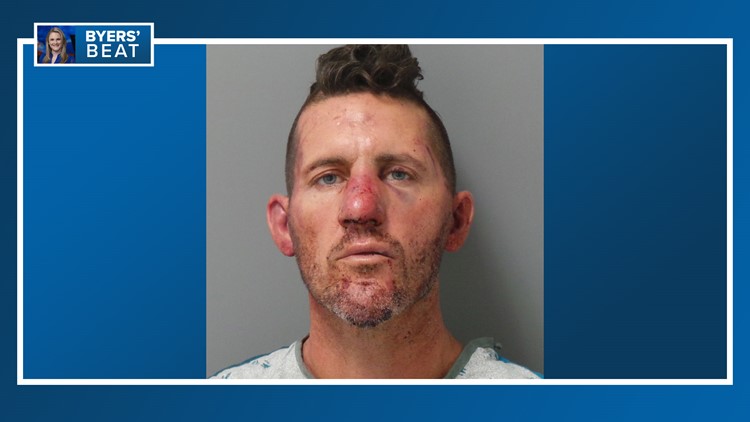ST. LOUIS — The last time someone got the death penalty in St. Louis was October 1995.
His name was Martin Link.
In 1991, he abducted, raped and murdered 11-year-old Elissa Self. She was on her way to a bus stop when he kidnapped her from an alley in the Tower Grove neighborhood, and dumped her body in the St. Francis River in southeast Missouri. She was found four days later.
Ever since, local prosecutors have tried, unsuccessfully, several times to get the death penalty.
I looked up this story recently as I wondered whether Officer Tamarris Bohannon’s killer could face the death penalty.
Bohannon, 29, and a father of three young children was shot and killed Aug. 29 responding to a call for a shooting – coincidentally less than a half-mile away from where Elissa was abducted all those years ago, also in the Tower Grove neighborhood.
Two heinous crimes, but the odds of Bohannon’s killer meeting the same fate as Elissa’s does not seem likely.
The decision to pursue the death penalty starts with the local prosecutor. In St. Louis, that’s Circuit Attorney Kim Gardner.
She has said she personally opposes the death penalty; however, her office has pursued the death penalty in some cases.
In November 2017, she tried to put Cornelius Green and Philip Cutler to death for an alleged murder-for-hire plot of Green’s pregnant girlfriend – a teacher for the St. Louis public school where Green worked as principal.
In August 2018, she sought the death penalty against Ollie Lynch Jr. for three homicides.
In October 2019, she handed off a triple homicide case to Attorney General Eric Schmitt, because her former lead prosecutor Robert Steele once counseled the suspect, Eric Lawson, as a public defender. In that case, Lawson is accused of murdering his girlfriend and her mother, setting fire to their apartment while his 10-month-old son and a 4-year-old little girl were inside. His son died, the little girl survived.
None of those cases have resulted in death sentences.
Part of the reason is that certifying a death penalty jury is difficult to do in the city.
It means prosecutors must get 12 people to say they would be willing to put someone to death for their crimes. The city’s jury pool is small compared to surrounding areas, so the voir dire – or the process by which prosecutors question potential jury members – could drag out too long.
It’s been nearly a decade since that happened.
In 2011, then Circuit Attorney Jennifer Joyce tried to get the death penalty for Fredrick Barnes in the 2007 murder of Dwoyne Ammons and the rape and murder of Ammons’ girlfriend.
Ultimately, the jury couldn’t decide between a life sentence or the death penalty.
A judge sentenced Barnes to life.
As for Bohannon’s killer, Gardner refused to say which way she is leaning.
Her spokeswoman said it’s still an open investigation, so she would not be commenting.
Another soccer club speaks out
Another youth soccer club has spoken out against sexual abuse among coaches and players.
Sporting STL sent a statement to all of its coaches in July after allegations that a coach for the Lou Fusz Athletic Club had sexually abused a 16-year-old player.
That coach, Hugh McVey, 31, was charged with statutory sodomy and rape in St. Louis County and St. Charles County.
This week, I reported on how the fallout from the scandal has affected the youth soccer scene as well as the high school the victim attends.
The reporting prompted Sporting STL to send the statement it sent to coaches to the parents of players in their club – and me – emphasizing the steps it is taking to ensure any misconduct or concerns are reported and how to do so.
The statement read, in part, “In regard to recent events within the St. Louis soccer community, we had immediately sent a statement to our coaches and faculty addressing our commitment to all of our Sporting STL players safety. As an organization we want our Sporting families to understand how serious we take this.”
The lengthy letter then included an explanation of how to report misconduct, the background check process that goes on as well as how failure to report suspicions – or actual misconduct – is against the law.
The statement continued: “It is not our job to know if the abuse can be proven or not. It is also not our job to know if the abuse is 100% true or not. Lastly, it is not our job to investigate the abuse or suspected abuse. It would be our job to report any suspected abuse through the Center for SafeSport’s online reporting form, www.safesport.org or by phone at 720-531-0340. By just reporting any suspected abuse to the SafeSport Center, we still need to report the suspected behaviors to the local hotline and/or authorities.”
Sporting STL statement:
More by Christine Byers



